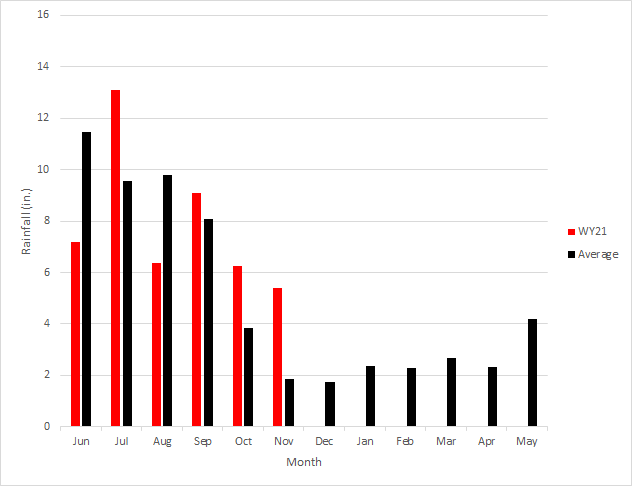Research and conservation staff assemble highlights from their fieldwork each month. Here are some reports from November.
Land Management
In the Sanctuary backcountry, work is in the final push for marsh and wet prairie restoration sites before water levels drop and make those areas inaccessible by airboat. On Panther Island, work has shifted to be more focused on vines and broadleaf species. Additionally, the Panther Island pole barn that was blown down during Hurricane Irma has been replaced with a new one.
Research
The research team continues to work with Florida Fish & Wildlife Conservation Commission to monitor the status and health of Florida panthers in the Sanctuary. FWC continues to place cameras throughout the Sanctuary to monitor our new panther mother and we wait eagerly to see our first panther kitten photos. Essential field activities continue for the research team while many on staff continue to work from home on data entry, data management, data analysis, and other computer-based projects. Florida Gulf Coast University volunteers have been helping with monthly fish monitoring. The first Wood Stork nest monitoring flight has been scheduled for mid-December.
Wildlife sightings
- Diamondback Rattlesnake
- Florida Panther at the center
- Pied-billed Grebe
- Black bear along Fish Farm Rd.
- Small flocks of Blue-winged Teal and Green-winged Teal on Panther Island
- Eastern Diamondback Rattlesnake in the Panther Island Expansion Bank
Hydrologic Update

November water levels remain near our wet season peak thanks to rainfall from Tropical Storm Eta (Nov 7-11). This extended period of high water is excellent for building up aquatic prey populations that will serve as the primary food source for wading birds as water levels eventually fall and we move into nesting season. Wood Storks have begun moving into our area but we have not seen many strong signs of nesting yet (adults with pink feet and/or carrying nesting material). We will conduct our first Wood Stork monitoring flight of the 2021 nesting season in mid-December.
Rainfall

Rainfall data
The average November rainfall at Corkscrew Swamp Sanctuary is 1.85” but this November we recorded 5.38”, which is higher than typical. This is the fourth highest November rainfall we’ve seen since 1959. The last time the Sanctuary saw this much rain in November was in 1998 when we received nearly 7 inches from TS Mitch that made landfall in Naples.
The cumulative water year rainfall is still in the average range (we’ve received 47.37” since June 1, and the average for the Sanctuary is 44.5”.



